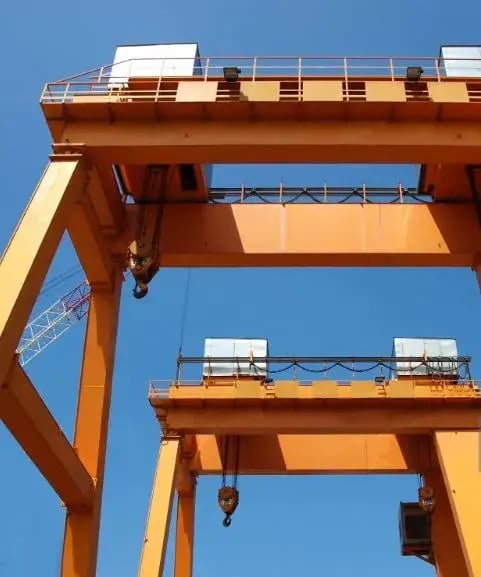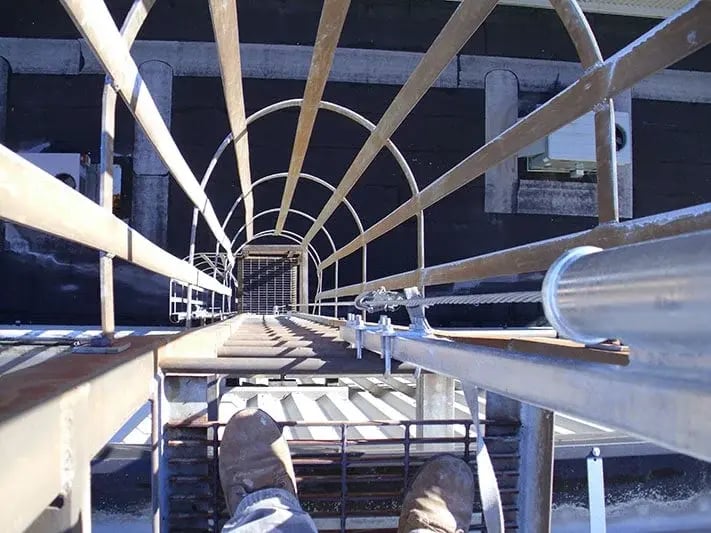Crane and Crane Rail
The overhead cranes, bridges, trolleys, rails and runway systems in your facility are vital to ensure safe and efficient operations, but their maintenance presents safety challenges. Diversified Fall Protection understands the fall hazards associated with crane and crane rail maintenance and repair.
When it comes to material handling applications, crane up-time is critical and providing safe access to maintenance personnel while working at heights is a must. Ensuring working safety and OSHA compliance requires the implementation of a comprehensive fall prevention strategy, which includes the proper mix of fall protection equipment, personnel training, and partnering with a fall protection company that appreciates the unique nature of your crane’s access points and potential fall hazards. With a properly designed fall protection system, your maintenance personnel will have the mobility they need to get the job done without compromising safety.
Whether you need inspection and repair of an existing crane rail lifeline, or installation of a new fall arrest system for an unprotected area, we can help. To schedule an on-site hazard assessment or discuss your fall protection needs, contact the safety specialists at Diversified Fall Protection.

Fall Protection Solutions
Design Considerations
Horizontal lifeline systems used to provide safe access for crane rail inspection must be secured on columns or support structure above the path of the crane. Placement of a horizontal lifeline must not impede the crane’s path and caution must be exercised on the “hot” side of the crane rail to prevent accidental electrocution in the event of a fall. Horizontal lifelines are also used to provide safe access to the bridge or girder section of the crane during end truck, gear, and power drive maintenance, and fall protection system design must not interfere with drum maintenance.
Ensuring crane and crane rail safety and OSHA compliance requires a turnkey approach. Our team of fall protection engineers can also fabricate and install runway access stairs and ladders to reduce the risks associated with climbing up to a monorail or overhead crane.

b-1.jpg?width=1368&height=1340&name=Rail%20(175)b-1.jpg)


1.webp?width=500&height=380&name=HLL%20Overhead%20(661)1.webp)
.webp?width=453&height=549&name=Confined%20Space%20and%20Rescue%20-%20In%20Applications%20(13).webp)

